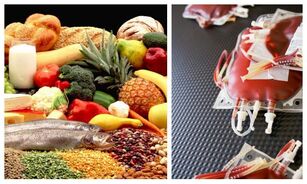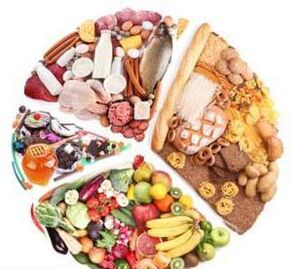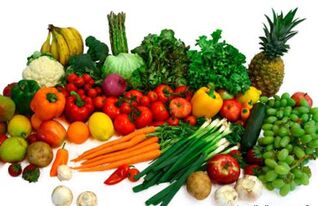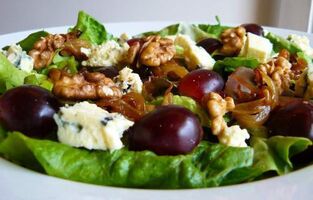Everyone comes of age when he or she begins to think about proper diet. Some make this decision because of being overweight, others - fighting disease. Unexpectedly, one reads a lot of literature to find suitable options for healthy eating. How to choose a diet to get the most benefits? Professional nutritionists can give advice. However, if the question arises about changing the diet, amateur performance can be expensive.
It should be understood that food can be cured and sometimes crippling. Therefore, any diet should be based on the laws of natural harmony, only diet will be beneficial.
Nature has created everything in extraordinary ways. There are 4 seasons, 4 stages of growth, 4 cardinal points. Surprisingly, there are also four types of blood. Each of them has its own composition. Today, special diets for blood groups have been developed, in which specific foods are selected for each.
Basic Diet
On the basis of years of medical practice, many consultations on nutrition issues, after supporting the theory with his father's research, American doctor Peter D'Adamo showed the world a unique method of nutrition, later known as the "Blood Type Diet". This is based on the assumption that weight, height and, of course, skin color are not the main differences between people. It all depends on the type of blood.

Lecithins, which meet all the tissues of the human body, are taken with food. These important cell blocks interact with blood groups in completely different ways. In terms of chemical composition, meat lecithin differs greatly from plant food components. To get excellent health and longevity, these building materials should be eaten in foods that will bring more benefits to the body.
Menu selection based on common ancestors
The blood type diet is based on an evolutionary section developed by American immunochemist William Clouser Boyd. Based on this theory, the owners of the same blood group have the same past. This allows you to make interesting trips and, from a nutritional standpoint, quite satisfying trips in time.
- Blood type 1. According to doctors, this is a human hunter. He believes that such a group is the blood of the first people on the planet. Of course, the best diet is high in meat.
- Group 2. This population is among the farmers. A suitable diet for this category of people is quite predictable. They are advised to eat more and a variety of vegetables, and to reduce red meat in the minimum diet.
- Group 3. It determines nomads. Owners of such blood are distinguished by strong immunity and unpretentious digestion. However, people with a third group should be wary of dairy products. However, their lactose intolerance is a historically validated fact.
- Group 4. These people are a unique mystery. This rare blood is recent and reflects evolutionary variability, as it combines the characteristics of different groups.
Product table
For convenience, the following is a list of foods to include in the menu. For example, it is known that a diet should contain vegetables if a person has blood type 2. Diet, recommended food schedule confirms this, although it may contain some other components.

Healthy Products
| 1 group | 2 groups | 3 groups | 4th group |
| Fish, meat, seafood, fruits (except sour), vegetables, green tea, rye bread, herbal stew from rose hips, mint, ginger | Cheese (low-fat varieties), sour milk products, legumes, soy milk, coffee, pineapple, juice, green tea and red wine | Meat (excluding chicken and duck), dairy products (non-fat), cereals (not buckwheat and wheat), eggs, fruits, vegetables, legumes | Rabbits, turkey, lamb, fish, dairy products, olive oil, legumes, nuts, cereals, fruits (excluding acids), vegetables, green tea, coffee, herbal tea |
In addition to healthy foods, blood type diets contain so-called neutral products. They are listed in the following table:
| 1 group | 2 groups | 3 groups | 4th group |
| Beer, raspberry, chamomile, sage, ginseng, valerian herbal tea, grape (red and white) | Hard milk (low fat), feta cheese, cottage cheese | Soy products, orange juice, black tea, wine, beer, coffee | Herbal tea (raspberry, mint, valerian), beer, wine |
Hazardous products are also highlighted in a separate table.
| 1 group | 2 groups | 3 groups |
| Cabbage (except broccoli), pickles, mayonnaise, tomato sauce, corn flour (all products made with it), alcohol, tea with raspberry and aloe leaves, coffee | Dairy products, meat, peppers, wheat, sugar, ice cream, butter, herring, halibut, seafood, caviar, rhubarb, oranges, bananas, oranges, coconuts, soda drinks, black tea | Fish, shrimp, shellfish, duck, chicken, pork, corn, lentils, olives, peanuts, tomato juice |
Privileges of first group representatives
Every "hunter" should know their positive aspects. But you can not ignore the risk factors. Blood group 1 diet requires high protein foods, meat, in the diet.
Such people are, as a rule, strong and independent, quite purposeful.
Positive:
- excellent digestive tract;
- excellent immunity;
- cell metabolism efficiency.
With all this, the owners of the first group also have drawbacks. It is important to know them. Keep in mind that the blood group 1 diet fully considers all of these features.

Risks associated with:
- problems with blood clotting;
- predisposition to various inflammatory processes;
- tendency to develop boils due to high acidity;
- allergies.
So you can take care of your own health, choosing the optimal product depending on which group you belong to.
However, the Rh factor question often arises. Research has shown that it cannot affect how a diet is formulated. 1 blood group - negative and positive - talks about the same nutrient synthesis. This means that the diet is the same. Therefore, the diet menu varies according to blood group, and not at all according to Rh factor.
Approximate menu for 1 group
Day 1
Breakfast.Rye sandwich sandwich with a little butter. A slice of goat cheese is also great. Mix herbal tea as a drink.
Lunch.Sorrel chicken soup with broccoli (about 250 g). Make a liver salad (chicken or beef can be used), spinach and tomatoes. Season with soy sauce.
Snacks.Walnut or almond (50 g). Perfect fruits - bananas, apples, plums.
Dinner.Add the oyster mushroom garnish (about 250 g) to the boiled beef. Make tea with St. John's wort and mint. John.
Day 2
Breakfast.Cook buckwheat porridge in soy milk. Green tea will refresh perfectly.
Lunch.Make seafood soup with cream, garlic and herbs. For the latter, carrot salad, asparagus and ingredients would be an ideal solution. Mix herbal tea as a drink.
Snacks.Pine nuts, walnuts or almonds (50 g) can be used. Leave 1 kiwi, pear or apple of your choice. Or 50 g of prunes.
Dinner.Bake the chicken with pineapple. Use peas or white pepper for garnish. Today you can drink cranberry juice.

Day 3
Breakfast.Refresh yourself with Feta bread. Tomatoes will complete the menu. And green tea will give you strength.
Lunch.Delicious mushroom soup, seasoned with fried vegetables, is the right solution. Treat yourself to a salad of eggs, shrimp, cucumber and apples.
Snacks.50 g of beans, one fruit and 50 g of prunes.
Dinner.Bake the fish (250-300 g) in the oven.
Characteristics of representatives of the 2nd blood group
Meat and dairy dishes are not included for farmers. Green light for vegetarianism. Food based on many plant foods. Blood group 2 - positive or negative, like the first, requires the same nutrients. Therefore, owners of any Rh factor can use the same scheme safely.
The special features of this group are firmness, serenity, collectivism, organization.
A specially developed diet takes into account all the health and digestive features. Blood group 2 (positive and negative) provides a representative with the following strengths:
- efficiency of the digestive and immune systems (only when observing vegetarians);
- high adaptation to the diet itself and the environment.
Unfortunately, the second group also gives the owner a weakness.
This includes:
- high threshold of nervous system excitement;
- increased sensitivity of the gastrointestinal tract;
- immunity is open to all infections.
Recommended menu for blood group 2
Day 1
Breakfast.Prepare rice porridge with apricot (250 g) in the morning, wash with green tea.
Lunch.Cook vegetable cream soup. For that, use carrots, Brussels sprouts, potatoes, pine nuts. Dishes about 250 g. Enjoy a salad of tomatoes, cucumbers and carrots. Use olive oil for dressing. Salads can be prepared in slightly different ways. Most importantly, do not forget: if you have a second blood group, the diet should be vegetarian.

Snacks.Cashew nuts or Brazil beans (50 g) will satisfy your hunger perfectly. And, of course, one vegetable to choose from - tomatoes or cucumbers. Can be replaced with fruit - apricot or plum (1-5 pcs. ).
Dinner.Boil mushrooms with carrots and zucchini (250 g). Wash with pineapple juice.
Day 2
Breakfast.Buckwheat porridge will be a great breakfast. It must be cooked in soy milk. Wash your breakfast with green tea.
Lunch.Sorrel soup with eggs will give you strength. Diversify the menu with carrot salad, asparagus and ingredients. Cherry juice will improve the tone significantly.
Snacks.Pine or walnut, almond (50 g) will help replenish your energy. From the fruit - apricot or plum. We recommend dried prunes or apricots (50 g).
Dinner.Cook the turkey fillet at night. Let rice and vegetables become side dishes. Refill with vitamins from cranberry juice.
Day 3
Breakfast.In the morning, treat yourself to a vegetable or fruit salad. And you can drink coffee.
Lunch.Prepare a light mushroom soup with vegetables. You will appreciate the cheese, cucumber, egg and apple salad.
Snacks.Nuts and fruits will help satisfy hunger.
Dinner.Bake the fish with boiled green beans (250-300 g).
Features of owners of 3 blood groups
These people are very adaptable. Foods for the 3rd blood group are varied. People are distinguished by flexibility, balance, creativity.
Representation has the power:
- high adaptation to diet and environment;
- immunity is stable;
- hardening of the nervous system.
As for its weaknesses, it is almost non-existent. Imbalance in nutrition can cause problems. This leads to autoimmune diseases.
Remember, Rh factor does not affect your diet. 3 blood groups - negative and positive - need the same nutrients. Therefore, you can safely proceed with diet recommendations.
Menu for 3 blood groups
These people are lucky enough to have a mixed diet. Blood group 3 diet opens up great opportunities in food choices.

Day 1
Breakfast.Cook rice porridge with apples (250 g). Make yourself an herbal tea made from St. John's wort or mint.
Lunch.Cook carrot soup, potatoes and mushroom cream (250 g). You can get a salad of sardines, eggs and cheese. Season with low-fat sour cream or olive oil.
Snacks.Allows you to taste cashew nuts, beans (Brazil or walnut) better. Dishes - about 50 g. Snack 1 cucumber or 1 carrot. And choose one fruit (1-3 pieces).
Dinner.Boil beef with eggplant and pepper (250 g).
Day 2
Breakfast.Cook oatmeal porridge (250 g) in the morning.
Lunch.Cook cream soup from cauliflower (Brussels sprouts) and broccoli. You can get a fruit salad.
Dinner:Boil the rabbit for the night. Rice with vegetables would be a great side dish. Wash with green tea.
Day 3
Breakfast.Low fat yogurt will give you strength in the morning. Make sure you add 1 apple to your diet. Drink berry juice.
Lunch. Make mushroom soup. Season with vegetables. And of course - salads. Make with beef, Chinese cabbage, cucumber, and coriander.
Snacks.Eat nuts or fruit for your afternoon snack.
Dinner:Bake fish with green beans (250-300 g).
Characteristics of the 4th blood group representative
From a historical point of view, it was formed relatively recently and received a mysterious status. Recommended for people with 4 positive blood types, diet based on moderation, but at the same time mixed.
The strengths of these people include:
- flexibility of the immune and nervous systems;
- combination of benefits of blood groups 2 and 3.
Weaknesses:
- digestive tract tenderness;
- exposure of the immune system to infection.
Budget menu for group 4
Day 1
Breakfast.Prepare wheat flour with apricots and apples (250 g). Coffee will make you happy.

Lunch.Cook vegetable cream soup (250 g). Salads can be made from eggs, cheese, sardines. Use sour cream or olive oil to dress.
Snacks.Almonds or nuts (50 g) will satisfy your hunger. For vegetables, you can eat 1 carrot or 1 cucumber. Choose fruit according to your taste (1-3 seeds).
Dinner.Boil the lamb, add pepper and eggplant (250 g).
Day 2
Breakfast.Make your own rice porridge (250 g).
Lunch.Cream soup made from various types of cabbage is very suitable. Any fruit salad.
Snacks.Beans (50 g), dried apricots or prunes (50 g) and black wheat bread (1-2 grains) will be excellent afternoon snacks.
Dinner.Enjoy julienne seafood.
Day 3
Breakfast.Eat low-fat yogurt and 1 pear. And you can wash it with sea buckthorn juice.
Lunch.Soup fried with vegetables, salads (from Chinese cabbage, tomatoes, turkey and cheese) will give you the perfect meal.
Snacks.Afternoon snacks can consist of fruits and nuts. You can drink kefir.
Dinner.Bake fish and rice (250-300 g).
Conclusion
Blood Type Diet is a systemic diet plan. It requires a complete dietary review and does not guarantee high results at any given time. But, in the opinion of the developer, coincidentally a diet with blood requirements allows you to get rid of extra pounds perfectly. However, this process will begin only when the metabolic processes in the body are adjusted. The author recommends his diet to those who want to lose weight gradually by clearing all systems. Or those who have decided to seriously engage in disease prevention, which also has its own specificity, depending on the blood type.































